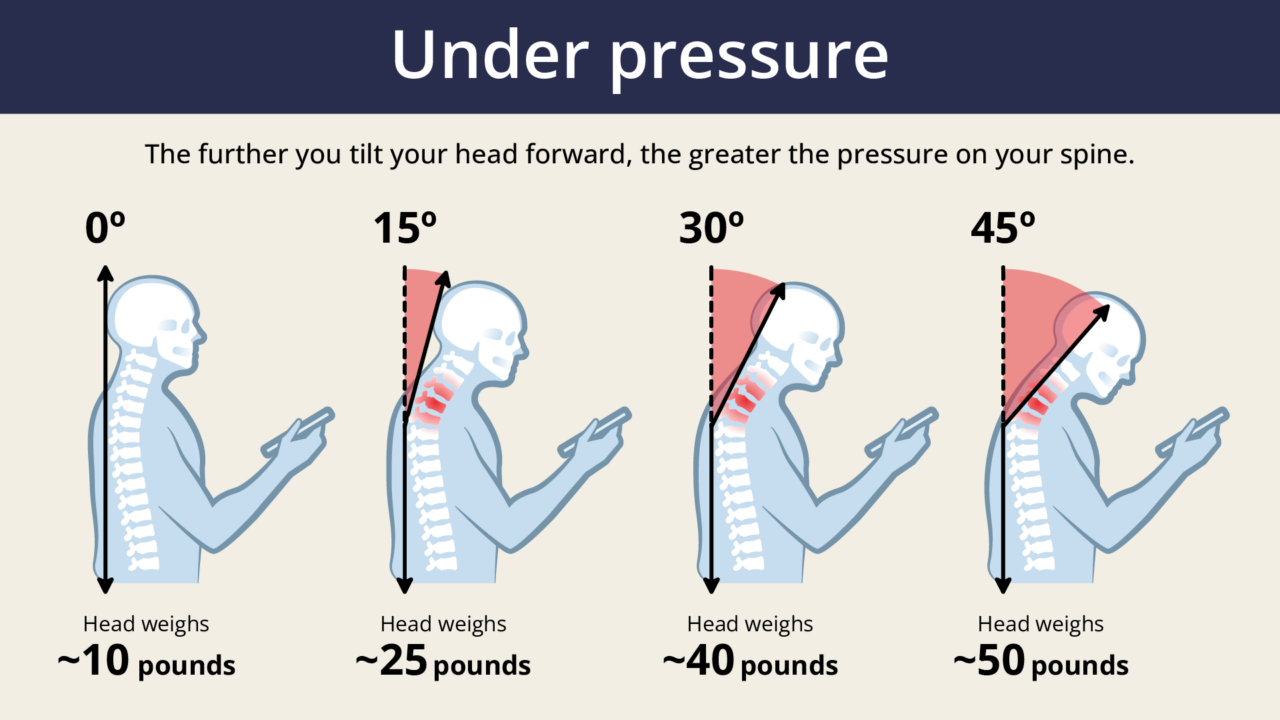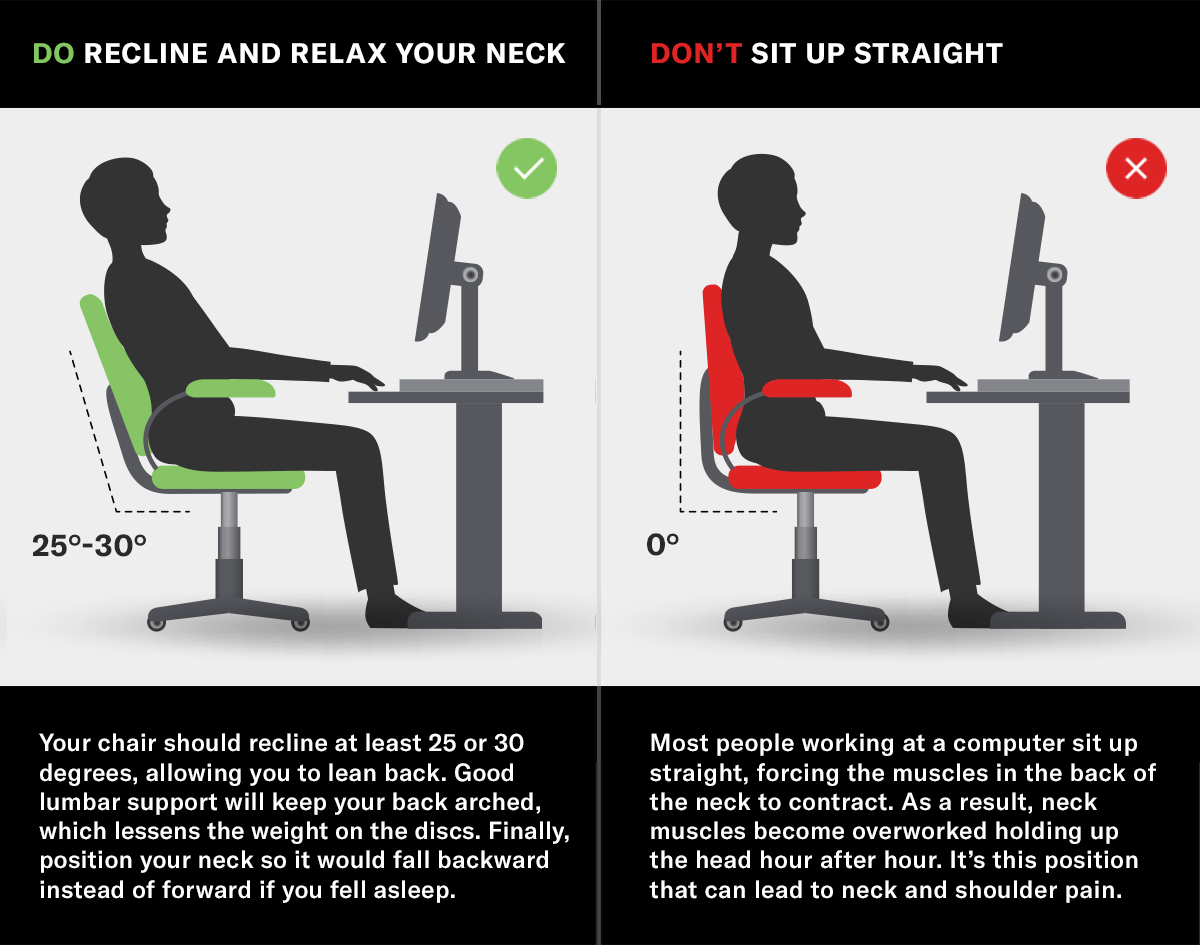- What Happens to Your Body After Walking 10,000 Steps Every Day for a Month
- What Is a Cortisol Cocktail? Stress Relief Drink or Hype?
- Cough Syrups Easily Available in Bengaluru Without Doctor’s Note
- 1 GB Internet Costs Less Than A Cup Of Tea: PM Modi Says
- 40% Surge in Urban Heart Issues: Essential Daily Habits for Office Workers
Tech neck, caused by prolonged screen use, leads to neck pain and stiffness. Prevent it with proper posture, ergonomic setups, and regular breaks. Adjust your device to eye level, sit with a straight back, and use a supportive chair.
Tech Neck Relief: How to Prevent and Cure Pain from Screen Time

In today’s digital age, "tech neck" has become a common issue, causing neck pain and stiffness from prolonged screen use. Whether you're working from home, scrolling on your phone, or gaming, hunching over devices strains your neck and spine. This article explores practical ways to prevent and cure tech neck, backed by expert advice and insights from reputable sources like Harvard Health, Cleveland Clinic, and WebMD. With simple posture adjustments, exercises, and ergonomic tweaks, you can find lasting relief and enjoy screen time without discomfort.
What Is Tech Neck?
Tech neck, also known as forward head posture, occurs when you tilt your head forward while using smartphones, laptops, or tablets for extended periods. According to Harvard Health, this posture places up to 60 pounds of pressure on your neck and spine, leading to pain, stiffness, and even headaches. Symptoms include sore shoulders, tight neck muscles, and reduced mobility. Prolonged tech neck can also contribute to long-term issues like cervical spine misalignment, as noted by the Cleveland Clinic. Understanding the cause—poor posture and repetitive strain—is the first step to prevention and relief.
How to Prevent Tech Neck

Preventing tech neck starts with mindful habits and ergonomic adjustments. Here are proven strategies to reduce strain:
1. Optimize Your Workspace: Position your computer screen at eye level, about an arm’s length away, as recommended by WebMD. Use a monitor stand or laptop riser to align your screen properly.
2. Maintain Proper Posture: Sit with your back straight, shoulders relaxed, and feet flat on the ground. The American Chiropractic Association suggests keeping your ears aligned with your shoulders to avoid forward tilt.
3. Take Regular Breaks: Follow the 20-20-20 rule—every 20 minutes, look 20 feet away for 20 seconds. This reduces eye and neck strain, per Cleveland Clinic.
4. Limit Device Use: Set boundaries for screen time, especially on handheld devices. Use apps to track and remind you to take breaks.
Effective Exercises to Relieve Tech Neck
Incorporating targeted exercises can alleviate tech neck pain and strengthen supporting muscles. Here are three expert-recommended moves from Healthline and Spine-Health:
1. Chin Tucks: Sit upright, gently tuck your chin toward your chest, and hold for 5 seconds. Repeat 10 times to strengthen neck muscles and improve alignment.
2. Neck Stretches: Slowly tilt your head to one side, bringing your ear toward your shoulder. Hold for 15–30 seconds per side to release tension.
3. Upper Back Extensions: Clasp your hands behind your head, pull your elbows back, and arch your upper back. Hold for 5 seconds and repeat 5 times to counter forward posture.
Perform these exercises daily for best results. Always consult a doctor before starting if you have severe pain.
Ergonomic Tools for Tech Neck Relief
Investing in ergonomic tools can significantly reduce tech neck. Consider these options, as suggested by Mayo Clinic and ergonomic experts:
➮Ergonomic Chair: Choose a chair with lumbar support to maintain a neutral spine.
➮Standing Desk: Alternate between sitting and standing to reduce neck strain.
➮Phone Holder: Use a stand to keep your phone at eye level, minimizing forward tilt.
➮Blue Light Glasses: These reduce eye strain, which can indirectly worsen neck posture.
These tools, combined with mindful habits, create a tech neck-resistant environment.
When to Seek Professional Help
While most tech neck cases improve with lifestyle changes, persistent pain may require professional intervention. According to the Cleveland Clinic, consult a physiotherapist or chiropractor if you experience chronic pain, numbness, or tingling. They may recommend treatments like manual therapy, posture training, or even imaging tests to rule out serious conditions. Early intervention prevents long-term damage, such as herniated discs, as noted by Spine-Health.
Long-Term Strategies for Pain-Free Screen Time
To maintain tech neck relief, adopt these long-term habits:
➮Mindfulness Practices: Yoga or meditation can improve posture awareness, as per Harvard Health.
➮Strengthen Core Muscles: A strong core supports proper spinal alignment, reducing neck strain.
➮Regular Check-Ins: Periodically assess your posture and workspace setup to stay proactive.
By integrating these strategies, you can enjoy technology without the pain.
Conclusion
Tech neck is a modern problem, but it’s preventable and treatable with the right approach. By optimizing your workspace, practicing good posture, incorporating exercises, and using ergonomic tools, you can relieve and prevent neck pain from screen time. For persistent issues, seek professional help to avoid complications. Start implementing these expert-backed tips today to reclaim comfort and maintain a healthy spine in our screen-driven world.
Sources: Harvard Health, Cleveland Clinic, WebMD, Healthline, Spine-Health, Mayo Clinic, American Chiropractic Association.
Embrace yoga and exercise to nurture your body, calm your mind, and prevent tech neck—health is the foundation of a vibrant life.
The 10-Minute Rule by Steve Jobs - A Stanford-Proven Creativity Hack
Discover Steve Jobs’ 10-minute rule, a simple yet powerful creativity hack backed by a Stanford study. This technique involves taking 10-minute breaks
Sushila Karki Sworn In as Nepal's First Woman PM: What You Need to Know
Sushila Karki, Nepal's former Chief Justice, was sworn in as interim Prime Minister on September 12, 2025, becoming the country's first female leader.
Russia Earthquake Today: 7.4 Magnitude Strike Off East Coast Sparks Pacific Alerts
A powerful 7.4 magnitude earthquake struck off Russia's Kamchatka Peninsula on September 12, 2025, at a shallow depth of 39.5 km, according to USGS da
NASA Discovers Potential Signs of Life in Mars Rock Sample
NASA's Perseverance rover made a groundbreaking discovery in July 2024 while exploring Jezero Crater on Mars. It encountered a rock dubbed "Cheyava Fa











